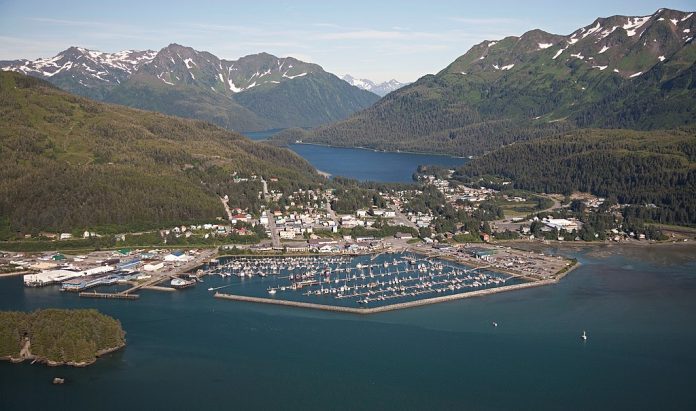Caught between a rock and a hard place, Cordova mayor Clay Koplin said that there were options for the salmon town during the coronavirus.
The coronavirus is not a zero-sum game explained the mayor of the small town of Cordova, Alaska, United States, near Prince William Sound, a wild salmon seafood 24/7 powerhouse when in full season.
Lion’s share
“Cordovas economy is directly and indirectly 90 to 95 per cent seafood catching and processing, I wouldn’t say we are a one-trick pony but the lion’s share of that business is salmon,” he told Alaska Public Media.
“The whole economy, it’s that important,” he said. No roads connect Cordova to other Alaskan towns, so a plane or ferry is required to travel there.

Influx
Last week, SalmonBusiness reported on how residents 460 miles away in Dillingham, Alaska, the economic, transportation hub for western Bristol Bay salmon run, were concerned that the town may be unsuited for the influx of fisherman and seasonal workers during the coronavirus.
Cordova has the earliest salmon fishery to start in the state. But like Dillingham – which only has a 16-bed hospital – it will have a serious issue if a pandemic breaks out. For example, it has no ICU beds, reports Anchorage Daily News.
A website called Keep Cordova Safe includes community members is making the case for why Cordova should halt an influx of summer workers. However, the community is sustained by salmon and the commercial fishing industry’s tax dollars.
In 2017, Anchorage Daily News reported on the importance of the wild salmon industry on the town. “Even in a state where 1 in 45 residents is employed as a commercial fisherman, Cordova stands out. The town has a little more than 1,700 adult residents, according to the Alaska Department of Commerce, and 297 of them are salmon permit holders,” it wrote. Like Dillingham, the town’s population swells during the season.
Alaska Public Media asked Mayor Clay Koplin if the town was split on the issue. “There are extremes,” he said. “I think the whole community shares a concern for the influx of fisherman and processor workers. The community is concerned about health many and most feel it could have a fishing season and keep the community safe”.
Unemployed or underemployed
The mayor added that the processors and the governer’s office were looking at options looking such using local unemployed or underemployed Alaskans to work during the run.
The state of Alaska forecasted 48.1 million sockeye salmon, 60.5 million pink salmon, with average commercial harvests of coho and chum this season.

